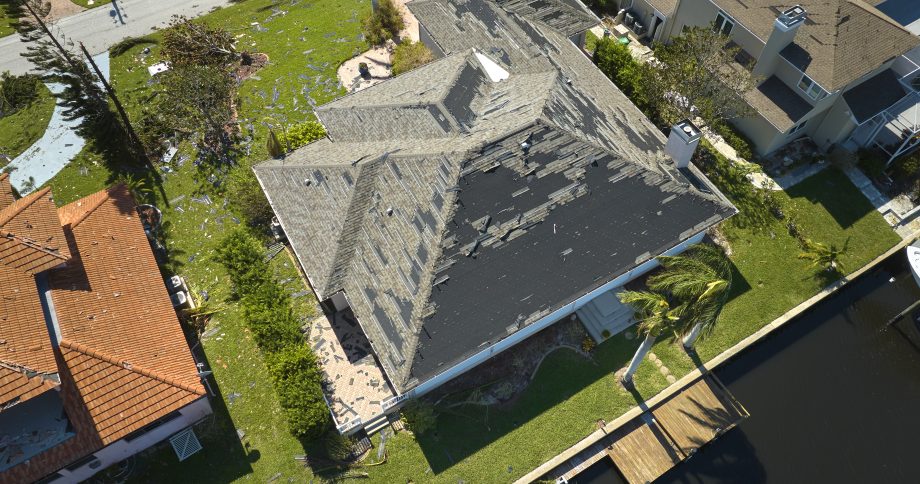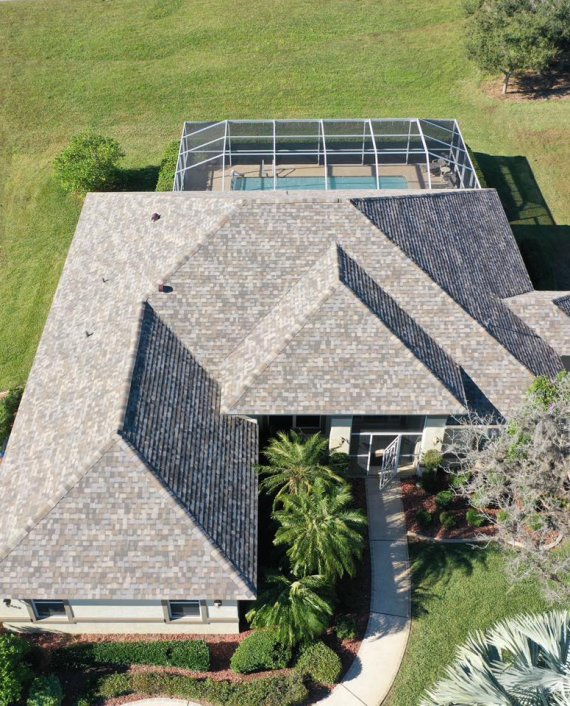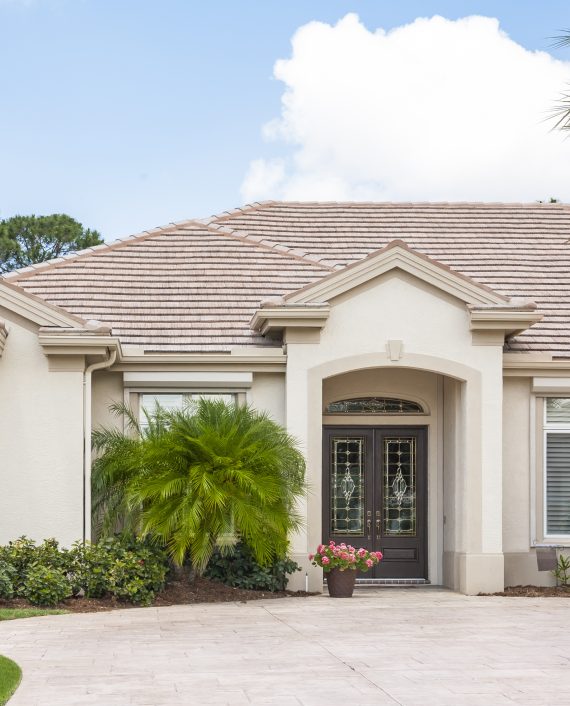For Florida homeowners, having a hurricane-resistant roof is a necessity for each storm season. Hurricanes and tropical storms bring punishing winds and torrential rain that can wreak havoc on a standard roof. Florida’s building codes are among the nation’s strictest, since roofs here must endure extreme conditions to protect the home. The good news is that by choosing the right roofing materials and construction practices, you can significantly boost your roof’s hurricane resistance. Quality Roofing & Sheet Metal specializes in durable roofing services that meet these high standards and installs new roofs built to safeguard your home for years to come.
In this article, we will explore why hurricane-resistant roofing matters in Florida’s climate, highlight the best roof materials for Florida’s storm season, and discuss the installation practices that make a roof truly storm-ready. We will also touch on insurance considerations and state grant programs that can help you upgrade to a stronger roof. By the end, you will know how to fortify your home with a “hurricane roof” that can weather the next big storm.
Why Hurricane-Resistant Roofing Matters in Florida

Each year, storm season threatens Florida homes with high winds, flying debris, and heavy rainfall. Your roof is the first line of defense against these elements. If it fails, wind and water can enter and cause catastrophic damage to your house. That’s why investing in a hurricane-resistant roof is so important. Not only does a stronger roof protect your family and property, but it can also save you money by preventing extensive interior repairs and mold issues down the road.
Wind is the biggest threat. A hurricane’s powerful gusts can easily tear off loose shingles or even entire roof sections if they are not properly installed. Winds exceeding 100+ mph put enormous uplift pressure on roofing materials. Florida has responded with rigorous wind-zone building codes that require enhanced roofing methods. For example, roofers must use a higher number of nails per shingle and stronger fastening schedules in high-wind regions. Roof deck attachments and underlayments also must meet specific standards in hurricane-prone areas, such as having a sealed roof deck or secondary water barrier to prevent rain intrusion if the outer roof covering is damaged. These upgrades increase upfront costs a bit, but they are essential for safety, long-term protection, and even insurance eligibility.
Hurricanes do not just bring wind – they hurl debris like tree branches from nearby areas. A weak roof can be punctured by this debris. Driving rain can exploit any weak spot, leading to leaks or even a complete roof failure if the structure is compromised. A storm-resistant roof uses durable materials and proper construction to resist high winds and flying debris impact. For example, metal roofing is noted for providing an extra layer of protection against wind-driven projectiles in storms. Likewise, roofing underlayments in Florida are often upgraded to peel-and-stick waterproof membranes, creating a sealed barrier so that even if shingles are lost, water will not pour straight into your home.
Finally, insurance plays a role in why you need a strong roof. Most homeowners’ insurance policies in Florida will cover wind damage from hurricanes, but only if your roof was up to code and the damage was caused by a covered peril (like wind or hail, not just age). If your roof is old or not built to current standards, you could face coverage issues or only partial reimbursement. Strengthening your roof today can secure not just your home, but also your peace of mind that insurance will pay if the worst happens. Many insurers also offer discounts for roofs with certified wind mitigation features (such as hurricane clips, secondary water barriers, or impact-resistant materials), effectively lowering your premiums. In short, a hurricane-resistant roof pays off by protecting your home and reducing your financial risk.
Best Roof Materials for Florida’s Hurricane Season
When it comes to choosing a hurricane-resistant roof, the material you select is extremely important. Quality Roofing & Sheet Metal installs three options ideal for Florida’s climate: asphalt shingles, tile roofing, and metal roofing. Each of these materials has proven storm-resistant qualities when professionally installed.
Let’s look at how each holds up under hurricane conditions:
Asphalt Shingles
Asphalt Shingle Roofs, one of the most common roofing materials in Florida, can indeed be part of a hurricane roof when you use high-quality shingles and professional installation. Modern architectural shingles are thicker and more durable than old three-tab shingles. With the right installation, they are rated for wind speeds up to 130 mph – strong enough for a Category 3 hurricane.
In fact, in Florida, these shingles are typically installed with enhanced nailing patterns and upgraded underlayments specifically to meet wind load requirements.

When installed by professionals, architectural shingles can stay put through intense wind gusts. However, it is worth noting that shingles are still a lighter-weight material. In a direct hit from a Category 4 or 5 hurricane, even the best shingles might sustain some damage. The key is that a well-installed shingle roof will lose far fewer pieces and will not fail catastrophically, buying you time until repairs can be made. Shingle roofs also have the advantage of being more affordable and easier to repair in small sections, which is helpful if a storm does manage to tear off a few shingles.
Quality Roofing USA makes sure any shingle roof we install is hurricane-ready by using premium architectural shingles and meeting all Florida building code requirements for wind resistance. Understanding the balance between cost and durability, asphalt shingles offer a cost-effective yet durable solution for inland and coastal Florida homes.
Tile Roofs
Tile roofs are beloved for their curb appeal, but they are also extremely durable when it comes to hurricanes. Individually, tiles are heavy and securely anchored, whether by screws, nails, or powerful adhesives. A professionally installed tile roof can resist high winds, heavy rain, and direct hurricane conditions without failure. Many tile roofing systems are tested to withstand sustained winds of 150 mph or more, akin to a Category 4 hurricane.
One reason tile roofs do well is their weight – the weight of the tiles helps them stay in place.

During Hurricane Irma and other recent storms, homes with well-installed tile roofs often came through with minimal damage, while neighboring shingle roofs lost large sections.
Tile roofs are not just stormproof; they are also long-lasting, with an estimated lifespan of 50–100 years. This longevity means a tile roof could survive multiple generations of hurricanes with routine maintenance.
Tile roofing also offers side benefits for Floridians: the dense tiles are fireproof, insect-proof, and rot-proof, and they insulate well against heat. Maintenance is typically low, and individual damaged tiles can be replaced if needed without replacing the whole roof. For homeowners in both coastal and inland Florida who desire a mix of premium aesthetics and hurricane durability, a tile roof is an ideal choice.
It is important to note that installing a tile roof for hurricane resistance requires expertise. Each tile must be properly fastened according to code, and the roof structure must be strong enough to support the weight. Quality Roofing USA’s team has years of experience installing and repairing tile roofs and uses only high-quality tiles and techniques. The result is a roof that not only looks elegant but can manage a barrage of hurricane-force winds and rain.
Metal Roofs
Metal roofing is the gold standard for hurricane-resistant roofs in Florida, and for good reason. Metal panels or metal tiles have exceptional strength and can shrug off wind, rain, and debris that might ruin other materials. In fact, some standing seam metal roofing systems can withstand winds exceeding 180 miles per hour – well above even the strongest recorded hurricane gusts in most parts of Florida. This makes metal an ideal choice for homeowners who never want to worry about their roof in a storm.
There are 3 types of Metal Roofing:
- Exposed Fastener
- Standing Seam (Concealed Fastener)
- Metal shingles/panels.

All perform great in high winds. Standing seam metal roofs feature interlocking panels with concealed fasteners, creating a continuous steel shield over your home. This design provides superior structural integrity and high resistance to wind uplift. There are no tabs or shingles to rip off; the metal panels are screwed down tightly, and edges are crimped or seamed together. Metal roofs also resist impact from flying debris, acting as a tough armor for your home.
Beyond strength, metal roofing has other benefits in Florida’s climate. It is fire-resistant and highly water-shedding, meaning the smooth panels let rain run off quickly without seeping in. Metal is also lightweight relative to its size, so it puts less stress on the roof structure. Homeowners who choose metal often find that it lowers their insurance premiums because of its superior performance in hurricanes. And, acting as a nice bonus in the Florida sun, the reflective nature of metal panels helps with energy efficiency, keeping your home cooler.
While metal roofing comes at a higher upfront cost than shingles, its longevity and storm performance are unmatched. A professionally installed metal roof can last 40–70 years. That long life and peace of mind make metal roofs a wise investment for many Floridians seeking the ultimate in hurricane protection.
Storm Damage, Insurance, and Roofing Grant Programs
Even with the best roof, Florida weather can deliver a storm that tests its limits. The aftermath of a hurricane or major storm is when you will be thankful you invested in a strong roof, and when you might deal with insurance and disaster assistance.
Insurance Coverage for Hurricane Roof Damage
After a hurricane, one of the first calls is often to your insurance company. Fortunately, standard homeowners’ insurance does cover most hurricane-related roof damage. This means if your shingles blow off or a tree limb damages your roof, you can file a claim to have the damage repaired or the roof replaced. We can help document the damage, provide professional estimates for the repairs, and work with your insurance adjuster to ensure you get the coverage you are entitled to.
State Grants and Programs
In addition to insurance, Florida has programs to help homeowners strengthen their homes against hurricanes before the next storm hits. One notable initiative is the My Safe Florida Home program, a state-funded program that provides free wind mitigation inspections and matching grants for eligible home improvements. These improvements can include upgrading your roof covering, adding roof-to-wall connections (hurricane straps), or other measures to harden your home. Homeowners who qualify can receive up to $10,000 in grant money to make recommended hurricane safety upgrades. The state will pay $2 for every $1 you spend (up to that limit) on approved projects like a new hurricane-resistant roof or impact-resistant windows.
Regular Maintenance and Inspections
To keep insurance valid and ensure your hurricane-resistant roof stays that way, maintain it well. Even a hurricane-resistant roof needs periodic inspections and upkeep. Florida’s climate can be harsh, so have your roof inspected at least once a year, and especially before hurricane season starts. An annual roof inspection can catch problems early. Little issues like a cracked tile or a loose shingle can be fixed, so they do not turn into major failures in a hurricane. Taking advantage of these services means your roof will always be in optimal shape when the next storm arrives.
Protect Your Home This Hurricane Season: Schedule Your Roof Consultation
Hurricane season will always be a challenge in Florida, but with the right roof over your head, you can face each storm with confidence. Quality Roofing & Sheet Metal has been helping Floridians fortify their homes for over 25 years, delivering top-quality roof replacements and repairs that stand up to our extreme weather. Whether you need a roof inspection, an emergency storm repair, or a full roof replacement with hurricane-rated materials, our expert team is here to guide you every step of the way.
